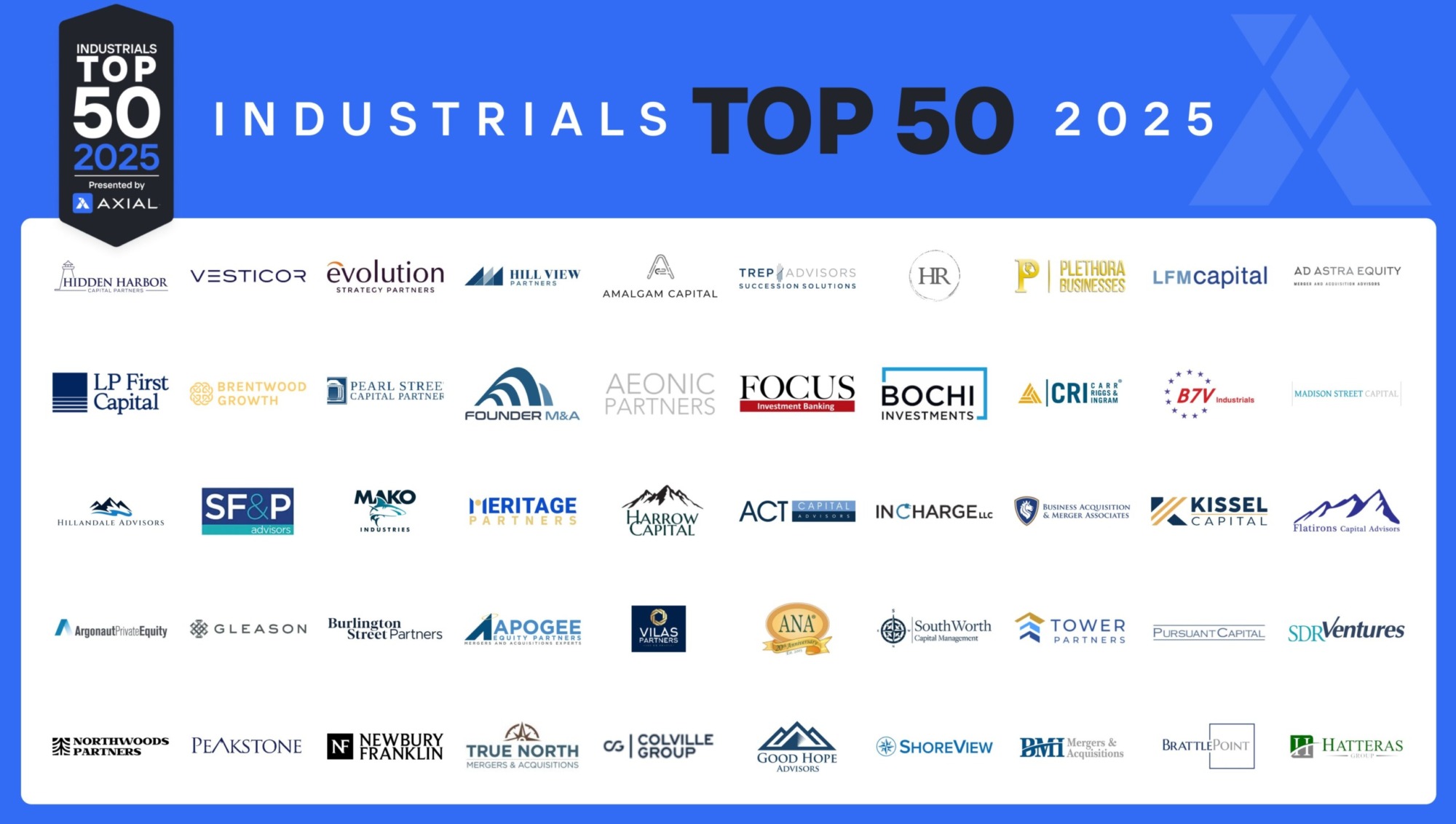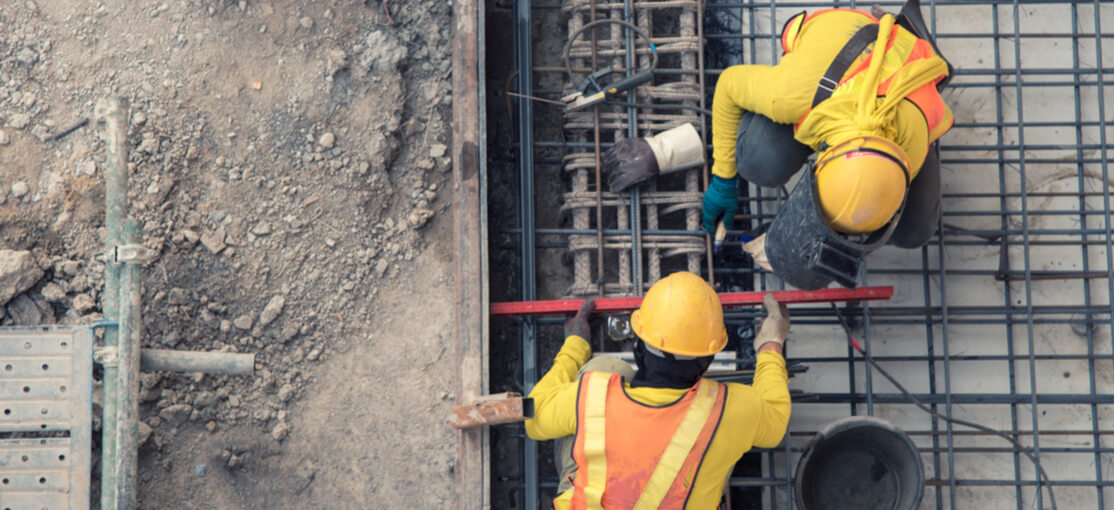
The Top 50 Lower Middle Market Industrials Investors & M&A Advisors [2025]
Industrials remains the most dominant sector in Axial deal flow, representing more than 25% of all deals brought to market…
“You know on HGTV when you see people flipping houses? That’s how we got started,” says Brett Motherwell, Managing Partner at Kassel Equity Group, based in Columbus, Ohio.
His partner Thomas Werner, a former engineering executive, had begun flipping houses with around $150,000 in 2010. Brett joined him in 2011. “I was 25 and playing professional hockey at the time, but I wasn’t very good. I didn’t see a long-term future for it. And then this opportunity with Tom came along. So I walked away from hockey. By 2015, we were flipping around 40 houses a year, as well as office buildings and apartment complexes.”
Flipping houses meant working with a lot of subcontractors. The process was frustrating. “We couldn’t get our subcontractors to show up on time or meet schedules or deadlines,” says Brett. “We got to thinking: If we’re feeling these type of pain points, other people have to be feeling them too.” How much easier, they thought, would it be if all these subcontractors were incorporated under one brand?
They conceived an investment thesis: buy up mechanical, electrical, and plumbing subcontractors in the general Columbus area, and then bid on construction projects as a unified brand. In addition to solving problems around miscommunication and prioritization, Tom was eager to use his engineering background to optimize existing construction processes.
In 2014, Tom and Brett joined Axial to source deals, and in 2015 they found a target company that seemed like a perfect fit for their first acquisition: Haslett Heating and Cooling, a $6.5M 108-year old commercial HVAC contractor based right nearby in Columbus.
In 2014, Tom and Brett joined Axial to source deals, and in 2015 they found a target company that seemed like a perfect fit for their first acquisition.
“At that time, a deal that size was all we could do,” Brett says. “Banks weren’t lining up to give us $40 million to go buy a company. We had to 4x secure the senior debt against real estate. We got $1.6 million in senior debt fees that we had to collateralize against a $7 million piece of real estate just to get that loan started.”
Kassel acquired the company in June 2016. Within 12 months, they had built it up to $11.5 million in top-line revenue.
Brett and Tom found their next deal via their Axial membership as well. Gutridge Plumbing was a $30 million plumbing contractor out of Newark, Ohio, a suburb of Columbus. The company had a strong local brand. “They were a family business with no real succession plan in place. We were in contract with them within 30 days of discovering them via Axial.” This deal closed in July 2017.
These two deals proved to be a valuable springboard for Tom and Brett. “The other companies we ended up buying came to us in the local market because they had heard that we had bought Haslett and Gutridge,” says Brett. These included a large electrical contractor, a large fire suppression contractor, two other small electrical contractors, and another small general construction and HVAC company. “All of a sudden, we went from $6.5 million in revenue to $40 million in revenue. This year we expect a little more than $105 million in revenue, with about $125 million expected in 2019.”
Kassel, which operates its unified subcontracts under the Gutridge brand in Columbus, now employs around 550 people in Central Ohio.
“The construction process is ridiculously manual and extremely inefficient,” says Tom. While neither he nor Brett come from a construction background, they started witnessing these problems first when flipping houses. The problems plaguing the industry became even clearer once they acquired Haslett.
“For example, we kept running into the problem on our own project where contractors would be fighting for the space above the ceiling grid,” says Brett. “You’ve got ceiling tiles or drywall for your ceiling in your office or house, and there’s only so much space before the next level fits in. Ductwork can be anywhere from 12 to 36 inches in diameter, you’ve got pipe running up there for the bathrooms, pipes for the sprinkler system, electrical wires that run across all that, and all the other bits and gadgets. There’s a lot of infighting for the space.”
Consolidating all the subcontractors meant that their interests were aligned and they were much more likely to work together productively.
The amount of on-site fabrication drove Tom crazy. “If you look at how most contractors are installing ductwork now, it’s the same way as they might have done it in the 80s or 90s. They might have an iPad on the job site and some engineering software, but the guys will still come in with sheet metal, bend it into place on site, and then they’re up and down a ladder five or six times before they get it hung. They’re cutting out the holes for the connectors and the vent holes out by hand.”
He knew there had to be a better way. “Think about putting together a picnic table. Instead of a situation where you’ve got 40 2×4’s and a bunch of bolts, and you have to saw-cut every single thing on site, put it together off of plans, what if all the pieces came pre-built, like a furniture set from IKEA, where everything’s labeled and you just put it together and it’s done?”
They’ve just begun implementing these new processes, but early results are promising. Gutridge recently managed the HVAC buildout for a Fortune 500 company building a headquarters in Columbus. “When we budgeted for our bid, it was before we’d rolled out this new system. We estimated it would take us 10,250 hours to finish the job. But we were able to roll out our new system for the first time, and we finished the job is about 8,500 hours. That’s nearly 2,000 hours of labor savings — and it was our first time using this system,” says Tom.
“That’s nearly 2,000 hours of labor savings — and it was our first time using this system.”
As they get the processes ironed out, they estimate they’ll be able to save around 40-50% on direct installation labor. Doing more work with fewer workers is a huge win, particularly given the current shortage of skilled construction labor.
As in any business, there have been many significant challenges for the Kassel team. Both Tom and Brett say having a partner to lean on and balance out their weaknesses has been crucial to their success. “One of my biggest challenges is working with people,” says Tom. “Engineers are typically introverts. I’m an introvert. But Brett is not. The things I hate — sales calls, customer-facing stuff — that’s what he’s strong at. And my strong suit is in the process and engineering side.”
Today, Tom and Brett are looking to the future. “The Central Ohio market was our test market,” says Brett. “Now we’re planning to expand into four other markets in the next seven years, again using Axial as one of the search mechanisms to find good, solid contractors.” Currently they’re closing on a deal in Charlotte, NC, a deal that they sourced via an Axial broker who reviewed their member profile and their history of deal activity in the subcontractor category.
Says Brett, “We spent a lot of time thinking about where we should expand to next, and we narrowed it to about 13 cities and regions. After Charlotte, the next market will likely be Nashville, then Indiana and Texas. It’s just press and repeat, press and repeat, as we refine the model.”
